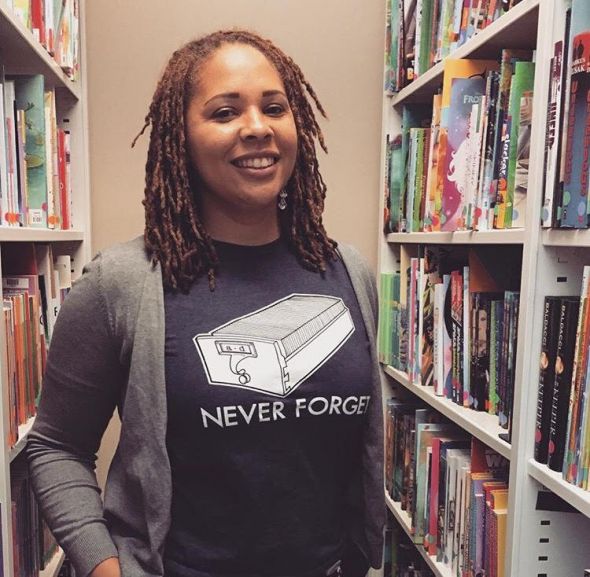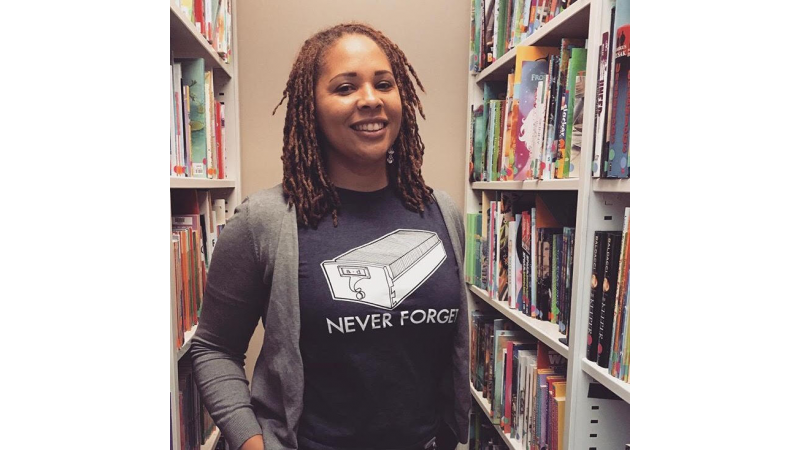As part of my role here at Scholastic, I'm one of a few people who tweet from our corporate Twitter account. And to get more specific, sometimes I tweet about an interview or Facebook Live featuring our librarian (and friend to this series) Deimosa. When this happens, I know the exact photo to use.

Responses to the photo are very consistent; people love it–and by extension, they *love* the card catalog!
For part two of this little Throwback Thursday sub-series about old school tools (the first was all about microfilm and microfiche), today we're going to do a deep dive into the Scholastic card catalog!
Our card catalog is physically located in the Scholastic Archive, which is in our building's sub-basement. It serves a function for all our classroom magazines similar to that of a book's index. The entire catalog is divided into drawers, with different magazines each assigned to a drawer. Cards in the catalog are divided by either subject, title, author, or cover.
- Subject cards: these list everything in a certain publication for one year on a specific subject
- Title cards: these feature one article title per card, and also list their volume and page number
- Author cards: these list all the articles an author wrote in one year, per publication
- Cover cards: created at the end of the year, these cards list all the covers in one year for a magazine
Scholastic librarians had to meticulously make each card by hand, for each year, until the 1990s. Then, with the advent of computers, online databases became popular and new content was digitized instead of being added to the card catalog.
So why do we still have and use the card catalog? A lot of our materials are not digitized yet (meaning all our classroom magazines pre the 1990s), and sometimes, the Library staff receives a request that makes them search through these older materials. Maybe someone was once on a cover of one of our magazines, or they won a Scholastic Art & Writing Award when they were a teen–these are all requests the Library has recieved and turned to the card catalog for!
Special thanks to Librarian Deimosa Webber-Bey for her ongoing help with this series!
Gina Asprocolas




